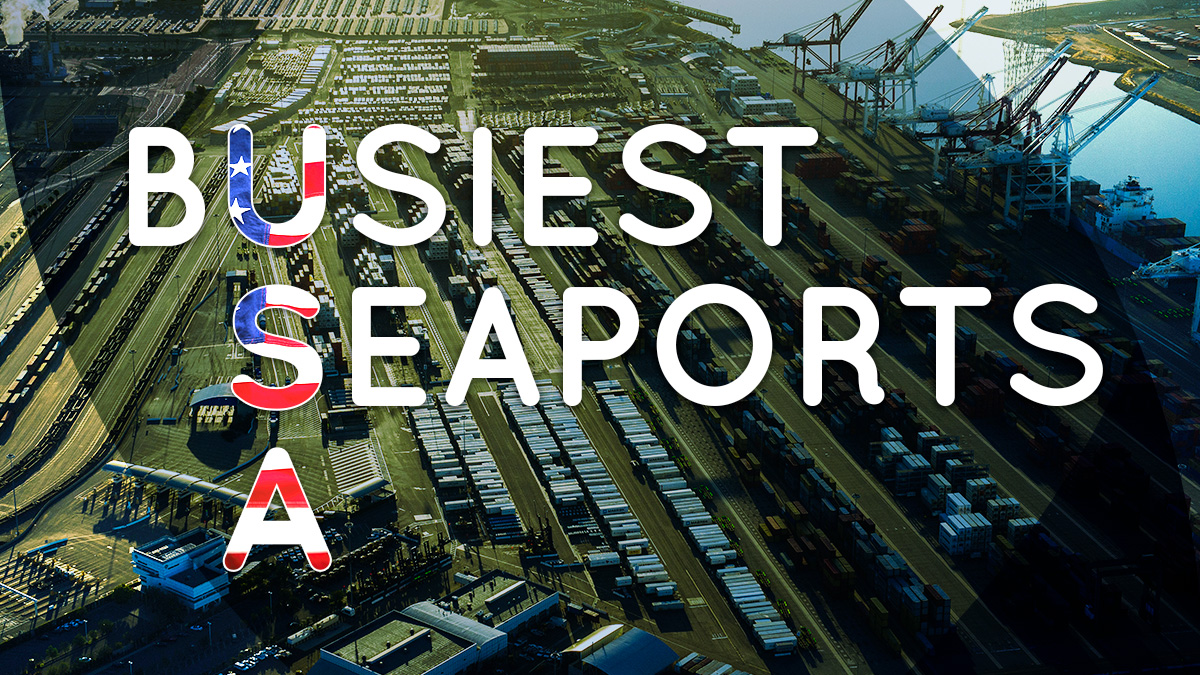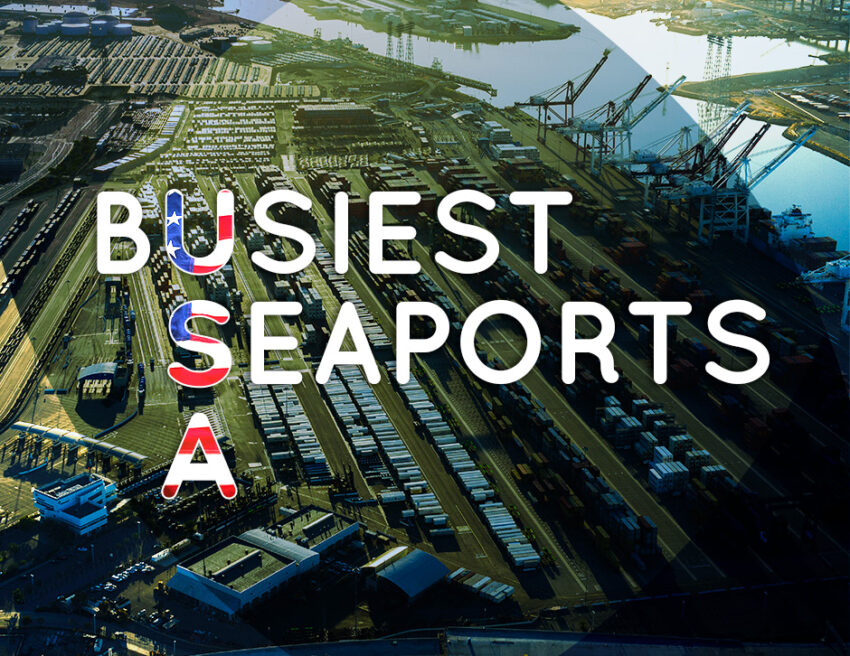For many of us, the journey of a product begins on store shelves or in delivery trucks. But before they reach our hands, nearly every item—whether it’s electronics, fresh produce, or the clothes we wear—has likely passed through one of America’s bustling seaports. These busiest ports in the USA form the backbone of U.S. commerce, ensuring a constant flow of goods to and from all corners of the world.

The busiest ports in the USA are more than just centers for trade; they’re hubs of history, innovation, and massive logistics networks. Each one contributes uniquely to the economy, supporting millions of jobs and handling countless tons of cargo. Behind the statistics and stacks of metal containers, each port has a story, shaped by its role in world events, environmental commitments, and the diverse goods that flow through it.
In this blog, we’ll take a closer look at some of the busiest seaports in the United States. From the energy powerhouse in Houston to the eco-conscious Port of Long Beach, each of these ports is a world unto itself, representing the pulse of American industry. So, let’s explore these remarkable hubs that keep the wheels of commerce turning, one container at a time.
1. Port of Los Angeles, California: The Busiest Port in the USA
The Port of Los Angeles, often called “America’s Port,” sits on the West Coast and is the nation’s largest and busiest seaport. This colossal gateway handles nearly 10 million TEUs (twenty-foot equivalent units) every year, making it the top choice for goods coming from Asia. Not only is it essential for imports, but it’s also a major export hub, particularly for agricultural products like cotton, nuts, and animal feed.
Fun Fact: The Port of Los Angeles operates over 20 container terminals across 7,500 acres. It’s so expansive that if the port were a city, it would be larger than Beverly Hills!
Among the busiest ports in the USA, the Port of Los Angeles is also leading the way in sustainability. It’s the first port in the United States to adopt a comprehensive Clean Air Action Plan, targeting a reduction in diesel emissions and other pollutants. This commitment to green technology makes it a model for other ports worldwide, balancing environmental concerns with its critical economic role.
2. Port of Long Beach, California: The ‘Green Port’
Just a few miles away from the Port of Los Angeles, the Port of Long Beach has earned the nickname “Green Port” due to its impressive sustainability initiatives. As the second busiest port in the U.S., Long Beach handles over 8 million TEUs annually. It plays a crucial role in facilitating trade with Asia and supports thousands of jobs in Southern California.
Interesting Fact: Long Beach was the first major U.S. seaport to use shore power for docked ships, significantly reducing harmful emissions. This port has invested billions in eco-friendly infrastructure, making it one of the cleanest and most efficient in the world.
The Port of Long Beach’s focus on environmental health goes beyond its onshore efforts; it has implemented programs to protect marine life and local communities. The port continues to innovate, with its SmartPort initiative utilizing automation to improve efficiency, making it a trailblazer among the busiest ports in the USA.
3. Port of New York and New Jersey: The Gateway to the East Coast
The Port of New York and New Jersey, the largest on the East Coast, is a historical cornerstone of American trade. As one of the oldest ports in the U.S., it once handled the influx of immigrants entering through Ellis Island. Today, it processes over 7 million TEUs each year, acting as a central distribution point for the populous East Coast.
Did You Know?: This port’s size is immense, with nearly 4,000 acres and multiple terminals. It’s strategically located within a day’s drive of about one-third of the U.S. population!
For those looking at the busiest ports in the USA, this port’s historical significance adds a rich layer to its modern-day operations. The iconic Statue of Liberty overlooks the harbor, serving as a reminder of the port’s place in U.S. history. The port has adapted over the years, expanding its capacity and infrastructure to keep up with growing trade demands.
The busiest ports in the USA are marvels of modern engineering and logistics. Each port has its own unique character, history, and role within the larger tapestry of American trade. From the Pacific Coast giants to the Gulf’s energy hubs and the historical ports of the East Coast, these seaports are lifelines for the U.S. economy. They connect communities, support jobs, and drive economic growth. Next time you see a ship docking or containers being unloaded, remember that these ports are more than just places of commerce; they are gateways to the world.


